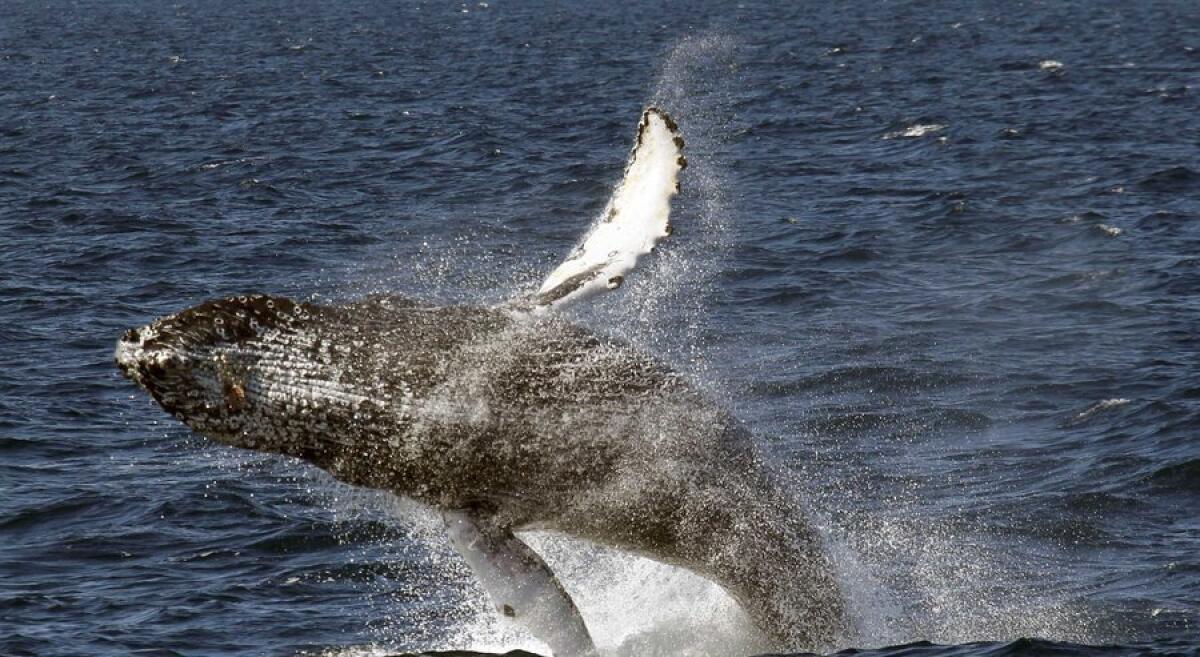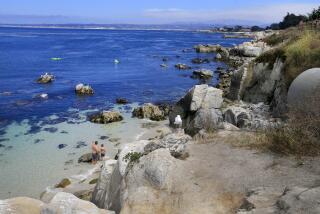What’s the dollar value of ocean resources?

The open ocean around San Diego, Hawaii and Peru generates at least $17-billion worth of resources each year, according to a study by San Diego researchers.
Published in the journal Frontiers in Marine Science, the study calculated values for items sold on the market, such as fish, but also quantified the benefits of carbon capture, recreation and biodiversity.
“Those are real services that marine environments do provide, but the average person doesn’t think of those in terms of dollars and cents,” said co-author Lisa Ballance, a marine mammal researcher with the Southwest Fisheries Science Center in La Jolla and a professor at the Scripps Institution of Oceanography.
The study borrowed from economic methodology used to calculate the merits of smaller systems such as coastal regions, inland bays or waterways.
It’s very easy to communicate the value of a commercially fished species. ... It’s more difficult to pass that idea along to a whale or dolphin or seabird.
— Marine mammal researcher Lisa Ballance
The researchers — including Ballance, marine researcher Summer Martin and UCSD economist Theodore Groves — applied the methodology to the Eastern Tropical Pacific Ocean, an immense swath stretching west from the coasts of North and South America.
The goal was to highlight the worth of different marine resources, and let people weigh them against each other.
“It’s very easy to communicate the value of a commercially fished species to a broad audience; we need this fish for food, for instance,” Ballance said. “But it’s more difficult to pass that idea along to a whale or dolphin or seabird.”
The $17-billion estimate is a low-ball figure, which represents a minimum estimate for the region’s value, and a starting point for assessing it, researchers noted.
Commercial fisheries were the most straightforward of the sectors they measured.
Using catch and sales data from the Inter-American Tropical Tuna Commission, researchers tallied the dollar amount for 10 common commercial fish at $2.7 billion per year. But that didn’t include the jobs associated with processing and shipping that catch, so the commercial fishing sector could be even bigger, said Martin, a postdoctoral researcher at the National Oceanic and Atmospheric Administration.
Measuring recreational fisheries was also relatively clear-cut.
The researchers drew from a study by the Billfish Foundation, a nonprofit dedicated to conserving the prized game fish. That report found that sport fishing at three popular spots in Latin America generated about $1.2 billion annually. That could be higher if other common fishing destinations were counted.
Calculating the value of carbon capture was more complex.
The global ocean has absorbed 41% of the carbon that humans have emitted, muting the effects of climate change on land, the study stated.
To measure the contributions of the Eastern Tropical Pacific, Martin estimated how much carbon is pumped from its surface waters to the deep ocean. Then she factored in the price of carbon on European cap-and-trade markets, which allow companies that emit lots of carbon to buy credits from others who reduce climate pollution.
On those markets, credits cost about $7 per metric ton of carbon. So carbon captured by the open ocean could be worth about $12 billion annually. That too could be an underestimate, given the predicted ravages of climate change.
“If you look at what economists say should be the price of carbon to make up for the bad effects carbon has on our environment, it should be a lot higher,” Martin said. “What economists say is the true social costs of all the effects of carbon pollution in the atmosphere is $35 per metric ton, which is five times our value.”
Big fish and marine mammals also could serve as living carbon sinks, the study proposed. Tuna, sharks, dolphins and whales keep carbon trapped in flesh and bone, where it cycles through the food chain instead of through the atmosphere.
Those animals and the ecosystems they reign over have their own value, which is perhaps the most difficult to quantify. Here you get into the realm of philosophy, religion, art and culture.
“We used the concept of existence value — the value that people place in knowing that charismatic megafauna are there — and looked at what proportion of the [global] cetaceans, seabirds and marine turtles are in that ecosystem,” Ballance said. “It’s on the order of one-third of the world’s portion of those species, which means that ecosystem is really valuable for protection.”
Calculating that number is tricky. It’s hard to say what an endangered whale is worth, and some fear that doing so risks turning an ethical debate into an economic one.
Martin argued that not placing a dollar figure on conservation makes it likely that other activities — such as fishing or drilling — will automatically take priority.
“The reality is that if we don’t think about ecosystem services in a way that puts a value on them, then they are assigned a value of zero. And that’s why we are in the situation we are today, with declining ecosystems and loss of species.”
deborah.brennan@sduniontribune.com
Brennan writes for the San Diego Union-Tribune.
More to Read
Start your day right
Sign up for Essential California for news, features and recommendations from the L.A. Times and beyond in your inbox six days a week.
You may occasionally receive promotional content from the Los Angeles Times.






